
Janeway lesions
Janeway lesions; painless, haemorrhagic macules of the palms/soles linked to infective endocarditis. Edward Gamaliel Janeway (1899)

Janeway lesions; painless, haemorrhagic macules of the palms/soles linked to infective endocarditis. Edward Gamaliel Janeway (1899)

Margaret Dix (1902–1991), British neuro-otologist who co-developed the Dix–Hallpike test, reshaped diagnosis of vertigo and advanced vestibular science
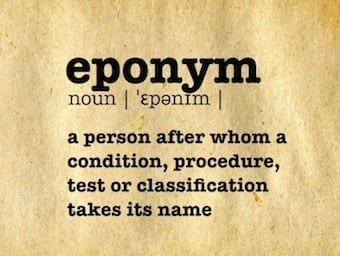
Nicholas Alders (1904-1995) was a Hungarian born, Austrian trained, English naturalised obstetrician, gynaecologist and surgeon. Remembered for his description of Alders sign (1951)
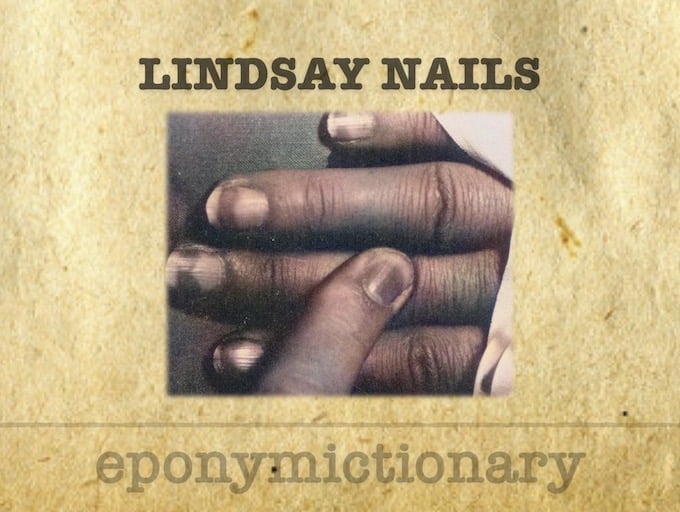
Lindsay nails (half-and-half nails) is an apparent leukonychia of the proximal portion of the nail which is white with distal 20-60% reddish-brown
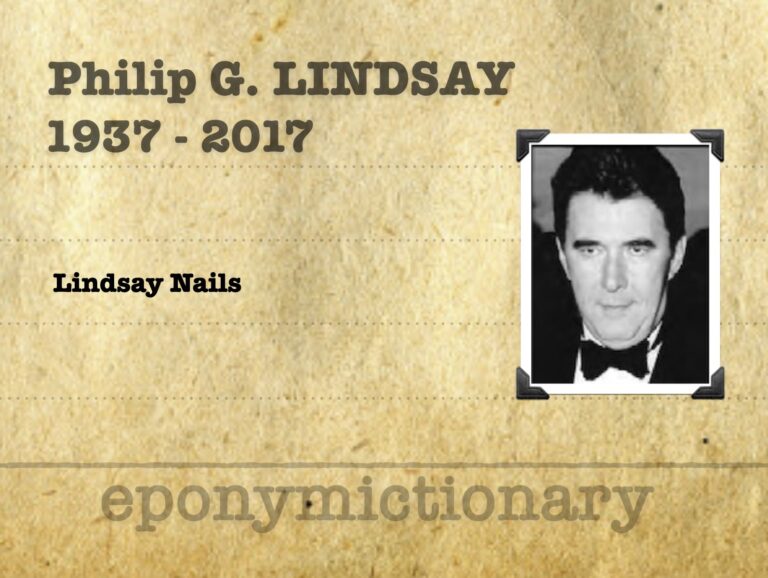
Philip Gaylord Lindsay (1937 - 2017) was an American physician and psychiatrist. Remembered eponymously for Lindsay nails (1967)
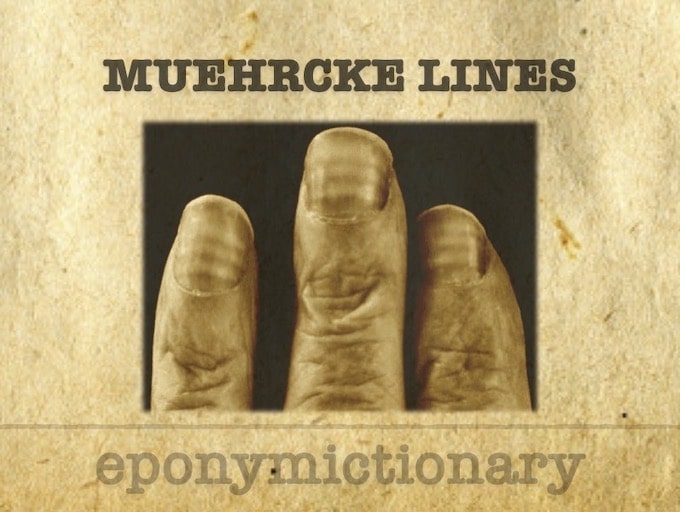
Muehrcke's nails (or Muehrcke lines) are a disorder of the nail bed which can be a reflection of systemic disease. A distinct pattern of paired, white, transverse lines that usually spare the thumbnail and are most commonly in seen in association with hypoalbuminaemia, metabolic stress or chemotherapy.

Terry's nails are a type of apparent leukonychia, characterized by ground glass opacification of almost the entire nail, with a narrow band of normal, pink nail bed at the distal border, and often with obliteration of the lunula.
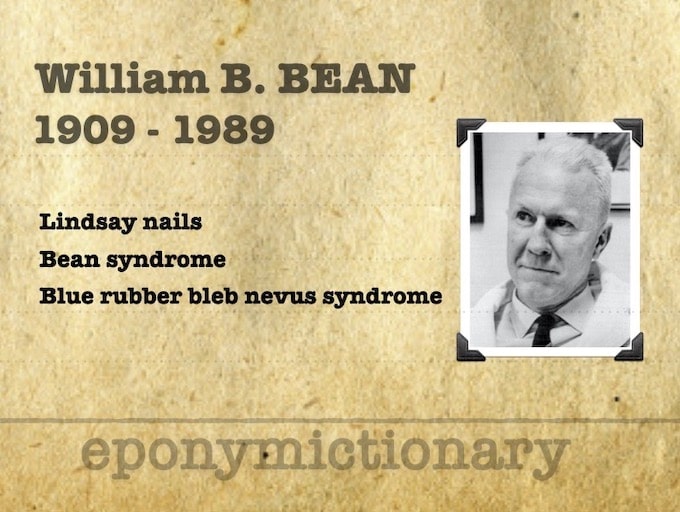
William Bennett Bean (1909-1989) was an American physician, medical historian. Bean syndrome (1958) [Blue rubber bleb nevus syndrome] and spider naevi

Professor Abraham Leo Schamroth (1924-1988) was a South African cardiologist.
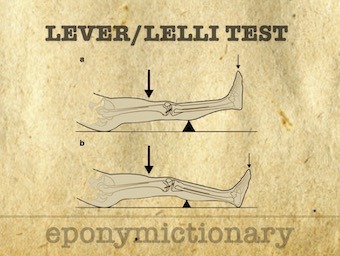
Lelli test or Lever test designed by Alessandro Lelli, Italian surgeon clinical test to diagnose Anterior Cruciate Ligament (ACL) disruption.

Alessandro Lelli - Italian orthopaedic surgeon specialising in knee arthroscopy and reconstructive surgery. Eponym: Lelli test (Lever test) Knee ACL
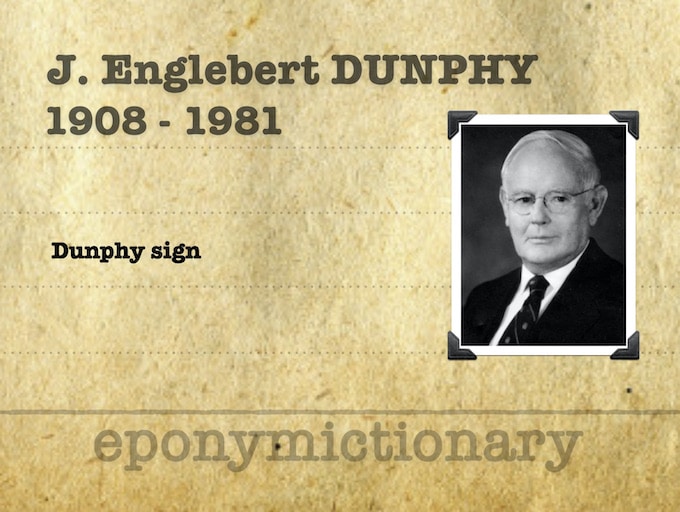
John Englebert Dunphy (1908-1981). Dunphy sign [*cough test for appendicitis] increased pain, localised to the right lower quadrant.